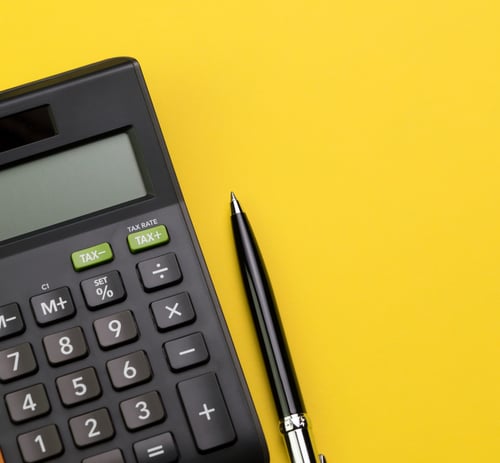What’s in a ‘thank you,’ and how much does it matter?
Recognition and appreciation are two important feelings for any employee (or human being in general), and being thanked for hard work, time and effort demonstrates that they are important to the organisation’s successful operation. This boosts employee motivation and morale and has proven results in improving retention.
Why focus on reward? Recognition and reward makes sense to the business:
- Employee engagement, productivity, and performance are 14% higher in organisations with recognition programmes than those without (Deloitte).
- 68% of HR professionals agree that employee recognition positively impacts retention (SHRM).
- 72% of UK employees agree their workplace wellbeing would improve if they were just thanked more (Reward Gateway).
But our most recent research lets us know that recognition and reward isn’t yet where it needs to be to best support employees:
- 55% of UK employees are looking for increased investment in reward and recognition.
- Only 8% said there is no room for improvement in the recognition and reward they receive from managers and colleagues.
- Finally, 55% of HR leaders in the UK said it is challenging to effectively reward and recognise employees.
While these figures are already compelling – there is one more stat from our research that seems to highlight a recent trend in recognition programme development:

With 72% of UK employees saying their employer could do more to offset inflationary pressures, it's no wonder that employers are increasingly looking to monetary rewards as a means to add additional impact to recognition.
Best practices for employee rewards
While story-based, peer-to-peer recognition forms the foundation of our clients’ recognition programmes, they often add in an additional layer of rewards for those above-and-beyond moments when recognition needs that additional impact. Here is what we have learned from them about launching and consistently benefitting from monetary rewards:
1. It’s OK to start small.
If you have a plan for who gets how much when it comes to rewards budget, go for it! But if you aren’t sure how rewards will be handled by your workforce, start with non-monetary eCards, or with senior leadership distributing rewards first with a plan to roll out budget to managers and supervisors over time.
With Reward Gateway’s Boost feature, managers can add financial rewards to recognition moments retroactively – and even recognition from somebody else in the company. For example, if an employee helps out another team and receives recognition thanking them for their time, that employee’s manager can attach a financial reward to that eCard – right from the social recognition wall – to emphasise that moment and behaviour.
2. Timeliness matters.
In 2018, Cornell University found that the more immediate the reward, the more likely it is to shape behaviour. Are your managers hoping to increase customer focus or timeliness of responses? Rewarding these actions when they happen will not only support employees, but help shift the culture to these actions that drive results, as well.
 3. Giving is a reward unto itself.
3. Giving is a reward unto itself.
There are physical and mental benefits of feeling gratitude and showing appreciation for others. In fact, studies have shown that using money to benefit others has a bigger impact on happiness than spending money on yourself. For this reason, while you may want to limit who has access to providing rewards for logistical or budgetary reasons, the more people that can give rewards to others, the bigger impact rewards can have on employee morale.
4. Flexibility is key.
Our clients appreciate the use of points or pounds that can be redeemed at hundreds of retailers, sent to a charitable organisation, or even exchanged for company-specific swag. Once you have rewards established, make sure what employees can use them for is also engaging, personalised and flexible!
5. Use metrics to build consistency.
When you start a new process, there will be early adopters and those that struggle to build the habit. To make recognition and reward more consistent, review regular metrics and share them with others. Has there been a dip in rewards sent? Has it been on the rise? Sharing these stats will motivate others to stay on track and use this tool.
Planning a reward budget
We get lots of questions about how to make rewards work. What a “good budget” is to get started. One way to get insights about your budget is to think about the four key areas for rewards. You may choose to focus your budget on one of these, or on many! (To calculate these for your organisation, check out our Reward Budget Calculator.)

- Reward budget by manager: Giving managers access to a regular budget is a great way to ensure the right people get rewards in a timely manner.
- Reward budget by topic: Topics such as Safety or Service are a great way to incorporate multiple awards throughout the year, perhaps an annual Safety Award, or a monthly Customer Service award.
- Rewards by calendar event: Calendar events or milestones are another example of how to introduce frequent rewards to your programme. For example, giving out a reward to all employees on Employee Appreciation Day or celebrating employee birthdays.
- Rewards for service or milestones: Most companies have a plan for Employee Service Awards or Long Service Awards. While honouring tenure can be a meaningful experience for employees, the average employee stays at a company for less than five years. It is important that service awards start early (one year, three years, etc.) and are not your only means of building loyalty.
Adding in a layer of rewards can build enthusiasm into an existing recognition programme, as well as ensure a wider group of employees believe the recognition and appreciation is genuine. Not only is it helpful to employees and satisfying for managers to use, it can also be a powerful legacy for HR and senior leaders to build into their organisation.
Reward Gateway’s mission is to Make the World a Better Place to Work – lofty, but we believe it’s attainable. To find out how RG can help improve your employee experience, schedule a call today.

 Kaitlin Howes
Kaitlin Howes


